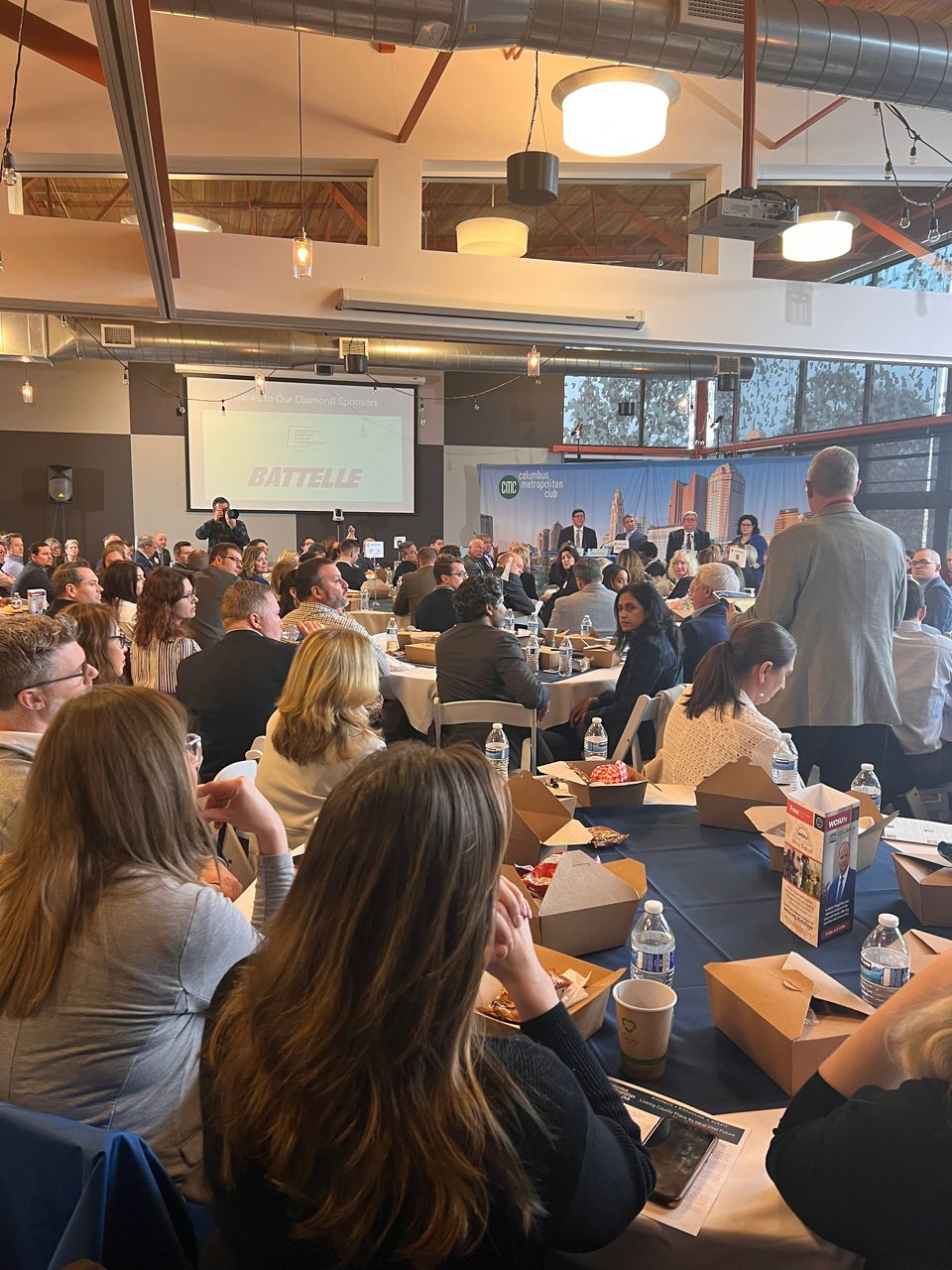LICKING COUNTY, Ohio — The big question at a forum hosted by Columbus Metropolitan Club at Grange Insurance Audubon Center on Feb. 22 was what does Licking County’s future look like?
With Intel, a multi-national technology company setting roots in Ohio, the state is envisioning what Licking County’s ideal Intel future looks like. Community leaders are looking at how the area can grow intelligently while keeping its Central Ohio heart and soul.
Members of the community had a chance to listen to a panel of community leaders who are involved in the planning process for the county, including Jennifer Roberts, the executive director for The Thomas J. Evans Foundation and neutral convener for FRAMEWORK, Jamie Greene, the Principal for planning NEXT, and Rick Platt, the president & CEO of the Heath-Newark-Licking County Port Authority. The event was hosted by Benjamin Lanka, the Business Editor for The Columbus Dispatch.

When the news first broke about Intel coming to Ohio many people wondered what’s going to happen to their backyard? Some people moved to Licking County because they didn’t want to live in a city like Columbus, so some people have been concerned about the loss of their rural lifestyle. Johnstown in particular, which is very close to where Intel is laying roots, is expected to grow tremendously, and it just became a city after the 2020 census showed the area’s population surpassed 5,000 residents. Their city’s website mentions they enjoy a “quaint, ‘small-town America’ vibe.”
The panelists looked to Chandler, Arizona, which is home to Intel’s Ocotillo campus, for comparison. They said Chandler saw its population double in just five years after Intel built a manufacturing facility there. Licking County is nearly 700 sq. miles, so some areas will experience a more drastic change than others, but the panel emphasized that growth is inevitable. However, they said if we properly plan for it, we can do it in a way that preserves the value of the communities and also benefits them.
“I keep repeating it is time for Ohio to get used to growth, you know, we can grow our economy," said Rick Platt, the president & CEO of the Heath-Newark-Licking County Port Authority. "And that doesn't mean that we're all fighting for some shrinking piece. We're all fighting for a bigger piece of the pie.”
Demographically, Licking County is 91% white and with Intel coming to the state, a diverse workforce is expected to follow. Intel emphasizes diversity and inclusion on its website. They said diversity and inclusion are key to innovation and previously announced in a Corporate Responsibility Report that it'll increase the number of women in technical roles and double the numbers of women and underrepresented minorities in senior roles by 2030.
The panel also discussed how one of the areas that will be most affected by Intel coming are the local school districts. Some schools in the area are already close to being overpopulated, so superintendents from all schools in the area are working together to plan for continued growth. The panel mentioned having strong school districts is part of what makes Licking County special, so they’re working to sustain that.
Roberts mentioned the collaboration across townships and villages within the county has been tremendous. She said Intel has been a catalyst for them to work together and said she has been pleased with the elected officials serving.
The panel also mentioned how community leaders are working with developers to plan for a multitude of housing. Roberts said that the majority of people living in Licking County are at “empty-nester” or retirement age. With Intel coming, their goal is to attract and retain younger people to the area so having a mix of housing options is a necessity, they said.
Community leaders are also looking at different ways of transit. They mentioned right now there are three different studies happening to help figure out ways to add transportation that’s beneficial to the health and wellbeing of communities and adds to people's quality of life. This means going beyond just more pavement for more cars and looking at options such as passenger rail, trails, bike paths and more.
Intel’s first two fabs in Ohio are expected to be completed in 2025, leaving many wondering if the state is behind the curve when it comes to having enough time to properly plan for growth. However, the panel reminded everyone the growth will occur steadily over many years, not all at once. They said while leaders do need to step on the gas, they have time to do it tastefully.
For more information about Intel coming to Ohio, click here.



